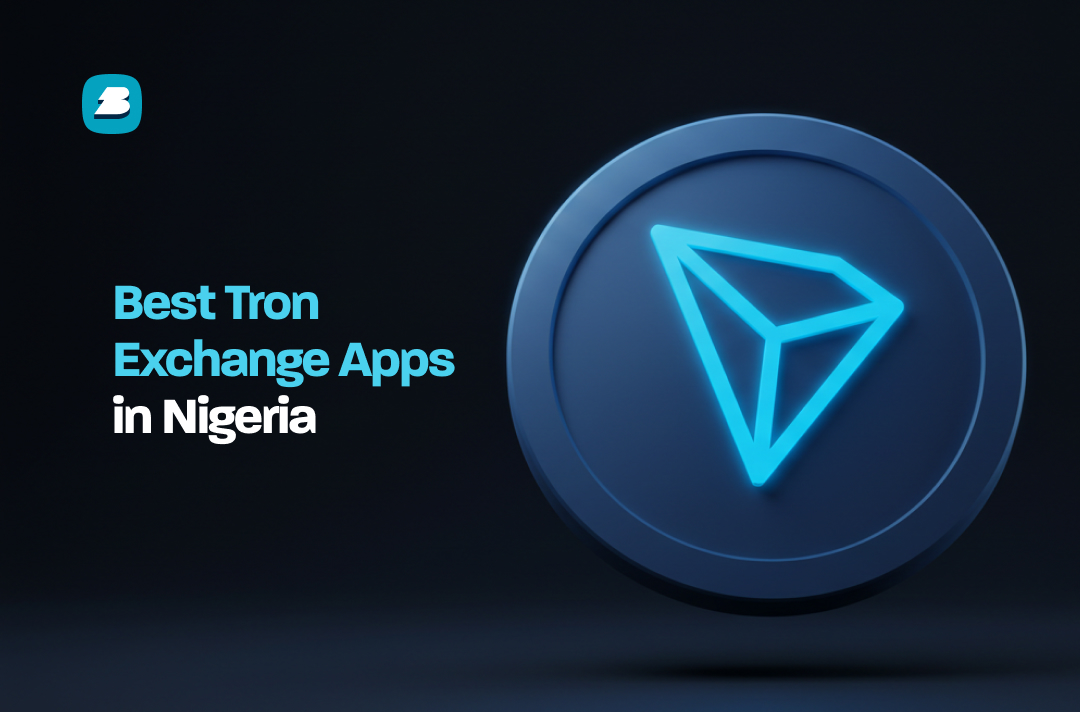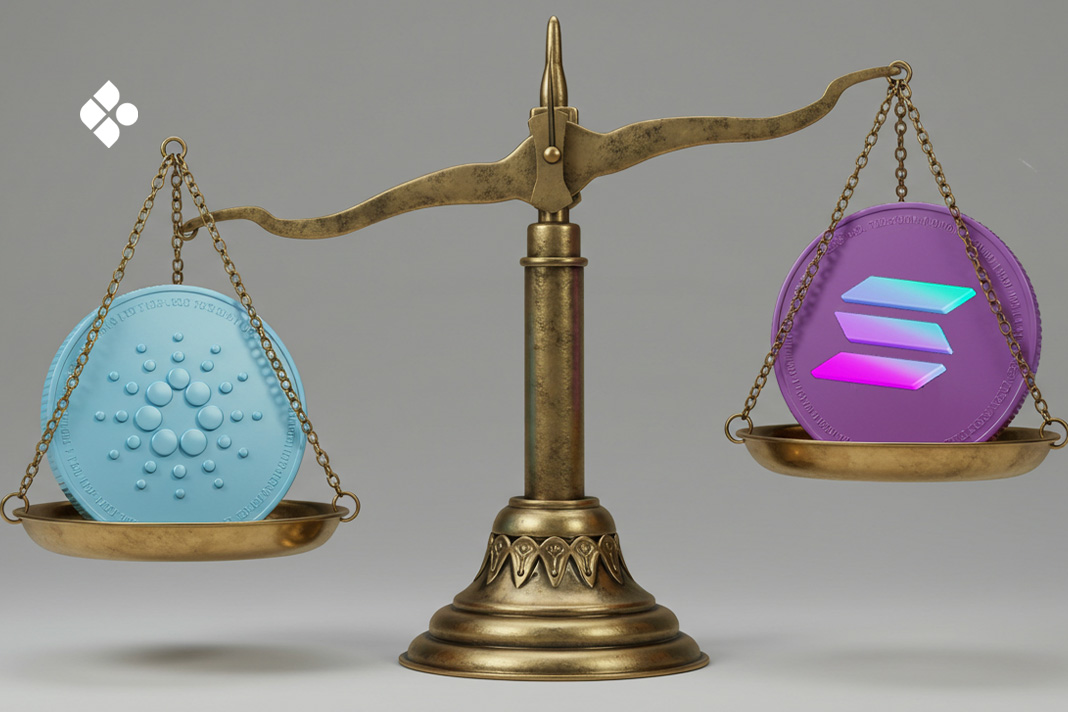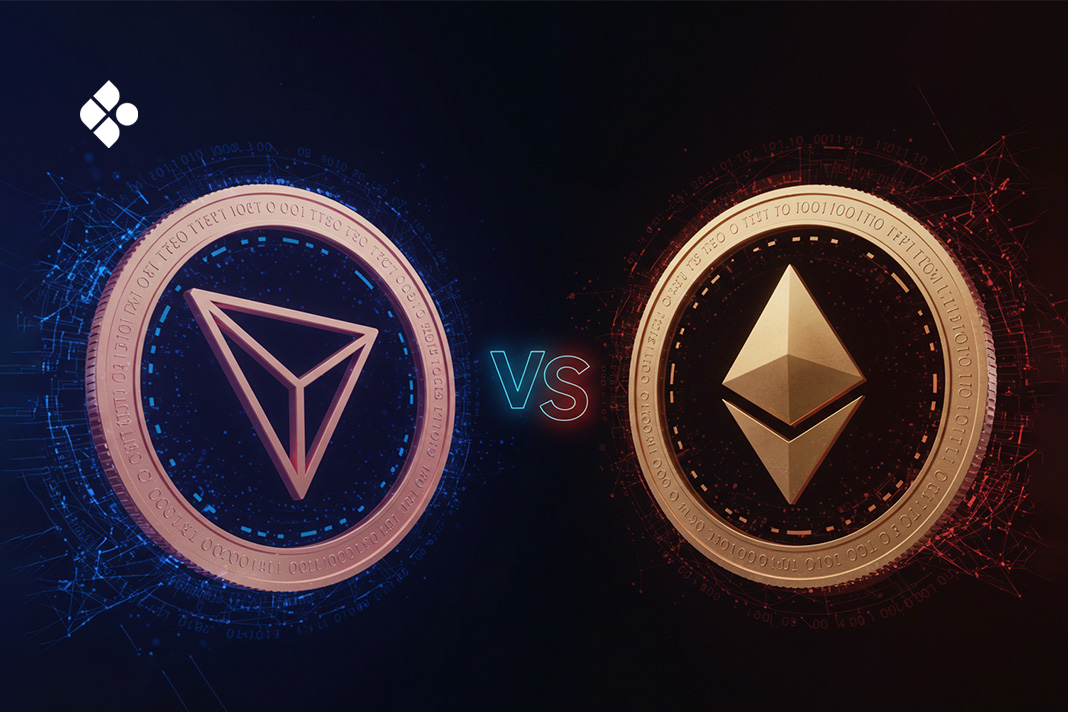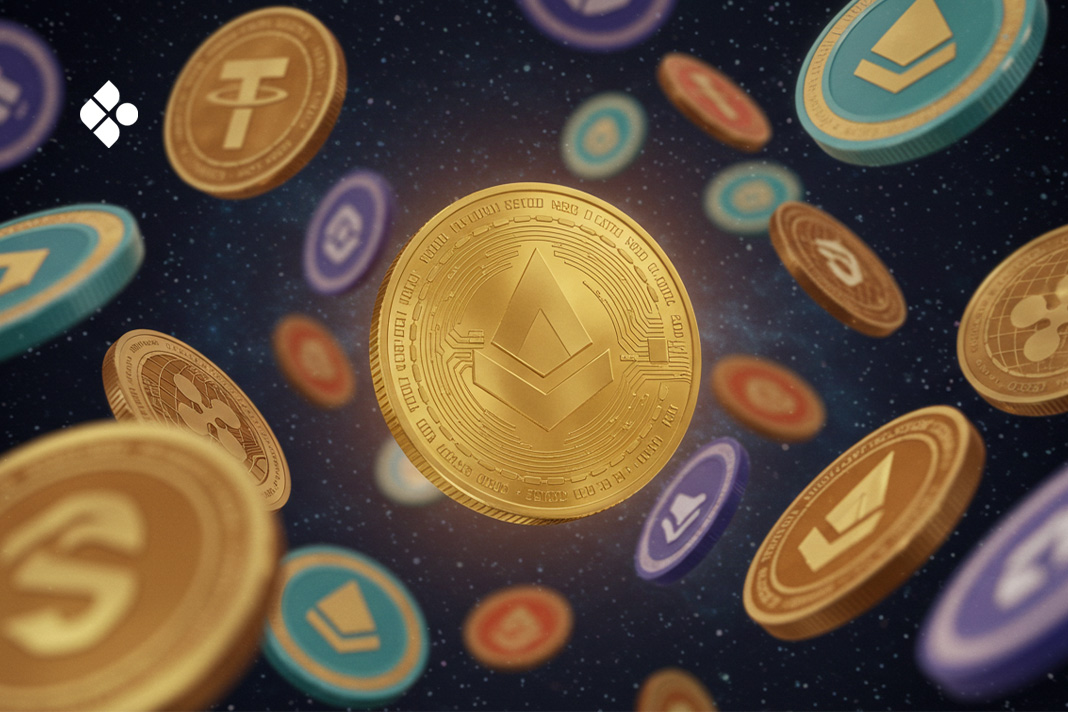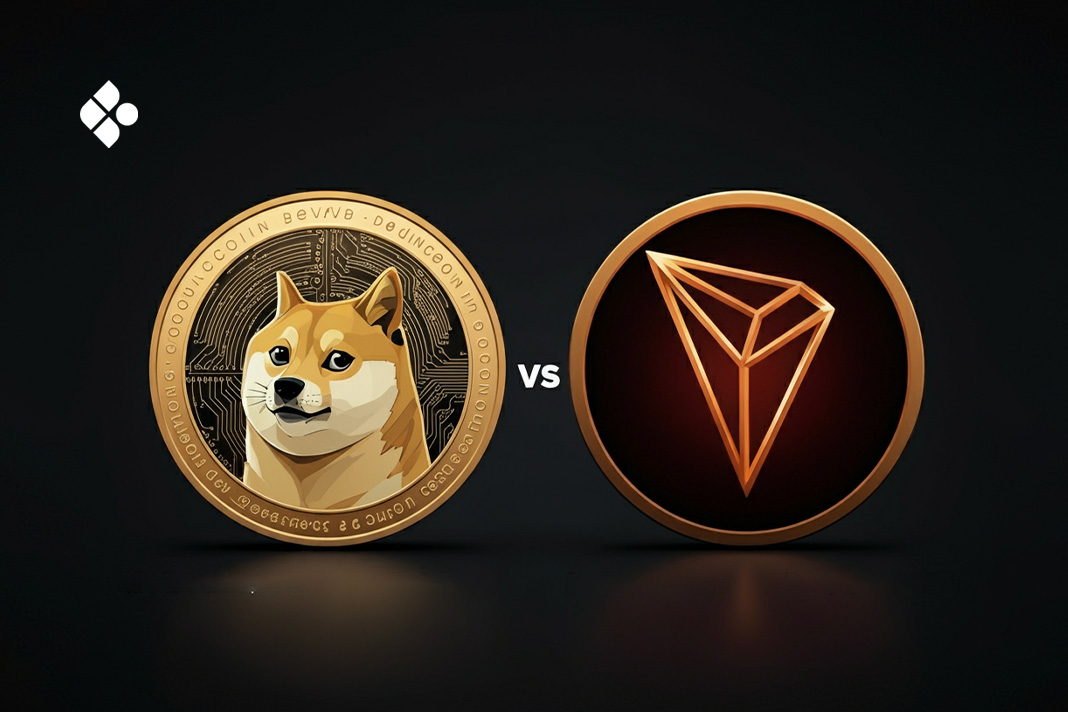If you’ve ever flipped a meme coin, bought an NFT, staked your crypto, or used a crypto wallet to swap tokens—you’ve likely used DeFi without even realizing it. And every time you do, you’re trusting the blockchain it runs on to keep your funds safe; that’s where security becomes a very big deal, especially in the ongoing conversation around Cardano vs. Solana and DeFi security.
Cardano and Solana are two of the most talked-about blockchains in the DeFi space, but they approach things differently—especially when it comes to how they handle security, network reliability, and smart contract risks.
So if you’re already using DeFi or planning to go deeper, let’s break down how both blockchains compare on the one thing that really counts—security.
Importance of Security in DeFi
Security in DeFi is not just a “nice to have,” but a priority. Why?
With decentralized transactions, there is no “customer care” or helpdesk to call if things go south. You can’t “reset your password,” and if a smart contract has bugs, there’s no undo button. These blockchain networks can also experience outages, and DeFi platforms are frequent targets for hackers, scammers, and bad actors. As a result, the blockchain you’re using plays a huge role in how well these risks are managed. Because at the end of the day, the speed or low fees of a blockchain don’t mean much if your funds can vanish in one bad click.
Here’s why you must carefully choose a blockchain to interact with:
- The blockchain’s architecture sets the security foundation: Some blockchains are designed with strong decentralization and rigorous consensus mechanisms. This reduces the chance of attacks, censorship, or network failures that could put your assets at risk.
- Faster doesn’t always mean safer: Many blockchains try to achieve high speed, so they compromise decentralization by relying on fewer validators or looser consensus rules to hit fast transaction times. This can sometimes lead to vulnerabilities because a blockchain that’s too centralized risks censorship, which can lead to frozen funds or manipulated transactions. The more distributed the network, the harder it is to compromise.
- Code and protocol audits depend on the chain’s ecosystem: Well-established blockchains often have stricter standards and more audits for DeFi projects, meaning fewer bugs and less chance of exploits. A blockchain with a strong developer community often means stronger security best practices.
- Security features built into the blockchain can protect users: Some blockchains include built-in protections like formal verification, on-chain governance, or stake-slashing mechanisms that actively discourage malicious behavior and protect user funds.
- Outages can cause loss of funds: If a blockchain network goes down or suffers an outage, your DeFi activity can be halted — meaning stuck transactions, delayed withdrawals, or worse. Choosing a chain with proven uptime and strong resiliency helps keep your funds accessible when you need them.
Bottom line: The blockchain you choose for DeFi isn’t just a platform — it’s the security backbone that can make or break your experience.
Comparison of Cardano and Solana’s Security Features
Cardano and Solana have different security features that make them good chains for DeFi applications and security. Here are a few comparisons between them to determine which is better in terms of security for DeFi platforms and applications.
- Consensus Mechanisms: Cardano uses a PoS consensus called Ouroboros, which is mathematically proven to be secure. The protocol’s codebase undergoes formal verification—a rigorous method that mathematically checks for vulnerabilities before deployment. This reduces the risk of bugs and exploits in blockchain networks.
Solana, on the other hand, uses a unique combo consensus mechanism, Proof-of-History combined with PoS allows for extremely fast transaction processing (up to 65,000 Transactions Per Second), which is great for DeFi apps that need speed. However, this high speed comes with trade-offs in decentralization and security. - Centralization: Cardano is designed to be highly decentralized, with thousands of stake pools running worldwide. This decentralization lowers the risk of attacks like 51% attacks or censorship, which helps keep DeFi projects safe on the network.
Solana, on the other hand, has fewer validators compared to Cardano, which raises some concerns about network centralization. Fewer validators mean a higher risk of collusion or attacks that could compromise the network’s security. - Network Stability: Cardano prioritizes security and stability over speed, meaning fewer network outages or bugs disrupting DeFi operations. This “slow and steady” method means your funds are less likely to get stuck or lost due to technical glitches.
Solana’s speed means that several thousand transactions can be completed in a second; however, this causes the network to be clogged, and Solana has experienced 7 major network outages and 3 minor performance hiccups in the past, sometimes lasting hours. For DeFi users, this means potential downtime where funds can be temporarily inaccessible or transactions delayed.

Solana outage history – Helius
- Community and Ecosystem: Solana’s ecosystem is rapidly expanding; according to data from DappRadar, Solana remains the second largest DeFi community with $9.56b in Defi Total-Value-Locked (TVL), behind Ethereum with $84.96. This strong developer community keeps expanding, and is actively improving security standards. However, the speed-driven design means occasional vulnerabilities in the past, making due diligence especially important when choosing projects on Solana.
Indeed, Cardano’s DeFi ecosystem isn’t as large as Solana’s, but its projects usually undergo rigorous testing and audits, reflecting the platform’s security-first mindset..
Cardano vs. Solana: Side-by-Side Comparison
| Feature/Factor | Cardano | Solana |
|---|---|---|
| Consensus Mechanism | Proof of Stake (Ouroboros) – slow but academically peer-reviewed | Proof of History + Proof of Stake – super fast but relatively new |
| Network Uptime | ✅ No major outages reported | ⚠️ Several network halts & downtimes in the past |
| Decentralization | Highly decentralized with over 3,000 stake pools | More centralized due to fewer validators |
| Security Model | Prioritizes formal methods and security-first development | Optimizes for performance, but has had security concerns |
| Smart Contract Design | Uses Haskell & Plutus—safe but harder to build on | Uses Rust & C—easier to build, but can open risk vectors |
| DeFi Ecosystem | Smaller, slowly growing, focused on stability | Larger and fast-growing, but faced with exploits |
| Best For | Builders who value security, stability, and decentralization | Builders who want speed, low fees, and wide adoption |
In Summary: If you prioritize robust security, decentralization, and stability over blazing speed, Cardano is a strong pick for your DeFi activities. However, if you favor high throughput and fast transactions, and you’re okay navigating occasional outages and a more centralized setup, Solana could do it for you.
Frequently Asked Questions: Cardano vs. Solana
What role does decentralization play in DeFi security?
Decentralization is like having multiple doors with different keys—instead of one gatekeeper, there are thousands.
It makes it harder for a single point of failure or attack to compromise the network. More decentralized networks (like Cardano) generally offer stronger resistance to censorship and hacks.
See Also: What Are Decentralized Exchanges
How does Solana’s Proof of History affect its security for DeFi users?
Solana’s unique Proof of History (PoH) is great for speed! It speeds up transactions by timestamping transactions before consensus. While this boosts performance, it adds complexity—and if something goes wrong in the timing chain, it can cause instability, such as network outages.
What makes Cardano’s security unique in the crypto ecosystem?
Cardano uses a peer-reviewed, research-first approach to everything—especially its Proof-of-Stake protocol, Ouroboros. It is mathematically backed and tested, offering strong predictability and trust.
Cardano or Solana: Which network has a better track record for avoiding outages?
Cardano takes the lead here; it is consistently reliabile and maintains near-zero downtime. Solana, on the other hand, has had several high-profile outages, which—while often fixed quickly—can be nerve-wracking for DeFi users during time-sensitive transactions.
Can network outages affect my funds?
Yes. During an outage (which has happened about 7 times on Solana), your funds might be safe but inaccessible. That means you can’t move, trade, or interact with them until the network recovers. On a more stable chain like Cardano, this is far less likely.
Are all DeFi projects on Solana less secure?
Not necessarily. There are solid, reputable projects on both chains. The key is to DYOR (do your own research). Moreover, Solana’s speed and low fees are great, especially for trying out new projects.
Key Takeaways
Both Cardano and Solana bring major innovations to DeFi—Solana with blazing speed, Cardano with ironclad security.
When it comes to DeFi, speed is nice—but security is non-negotiable. The chain you choose could be the difference between profit and loss.
If you found this helpful, check out more beginner-friendly and advanced crypto guides on the Breet Blog—your go-to for smart, safe crypto learning.
Conclusion
While you can choose to explore any DeFi applications built on Cardano and Solana, you can always refer to the comparison between both blockchains made in this piece to inform your decision, alongside other research you will carry out. The security of your assets is one of the most important aspects of trading or investing, so choose wisely.

